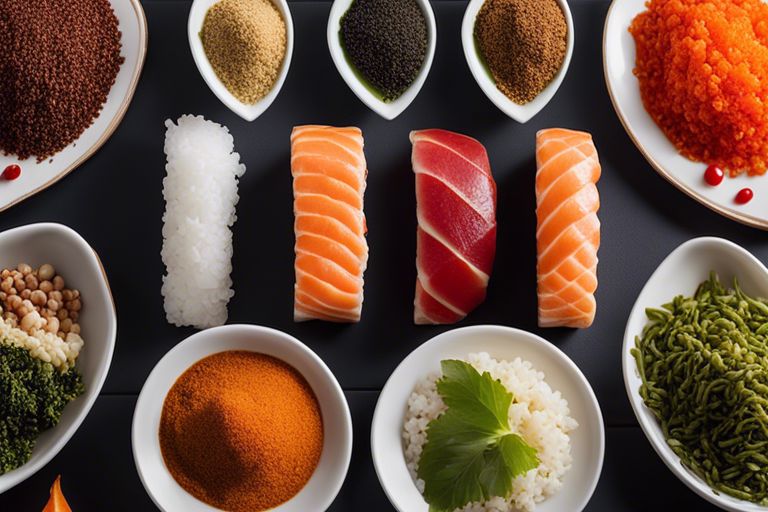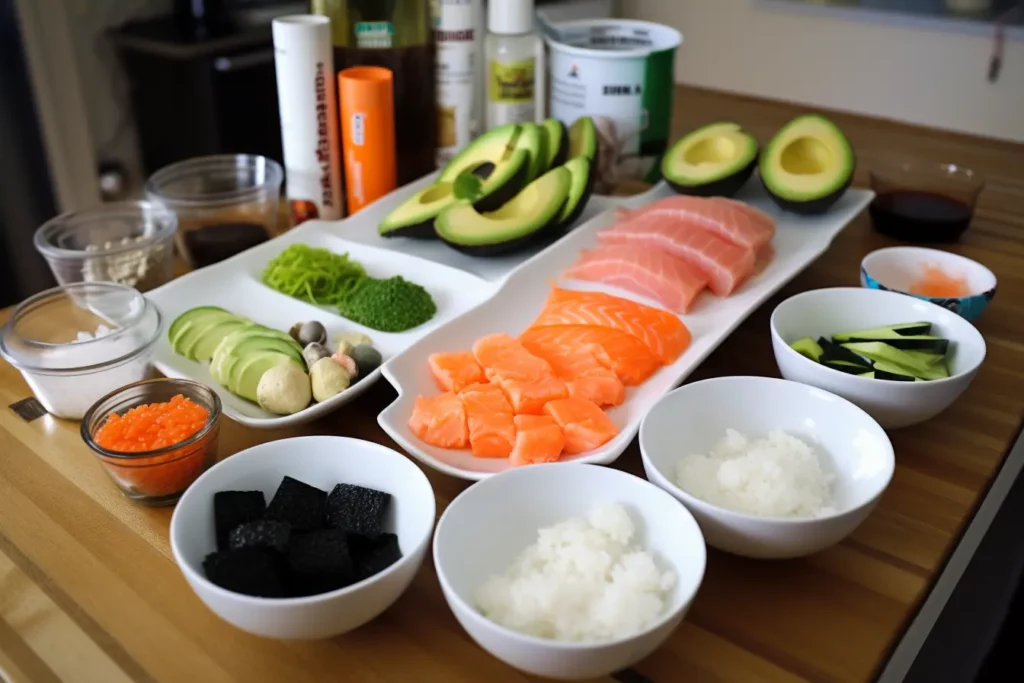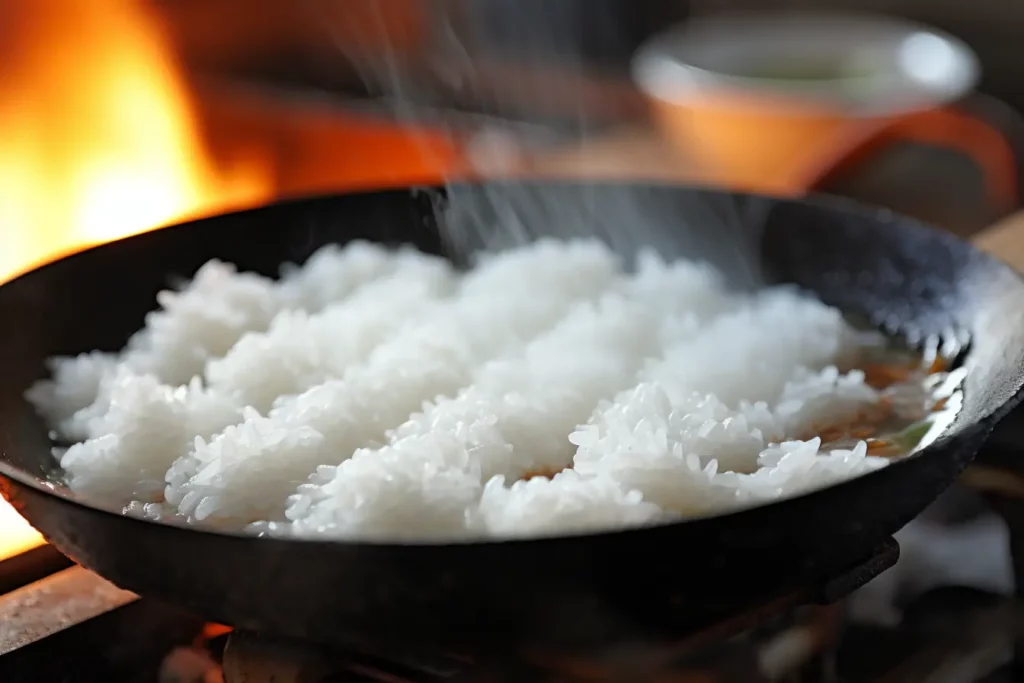Introduction
Welcome to my new blog post about the different sushi spices! In this article, I’m going to explore the traditional and modern approaches to seasoning sushi and find out which one is the most popular choice.
History of Sushi
Sushi has a fascinating history dating back to the 8th century. Sushi was originally developed as a method of preserving fish, but over time it has become a well-known delicacy enjoyed all over the world.
Overview: Traditional and Modern Approaches
The way sushi is prepared has changed a lot over the years. While traditional methods are based on emphasizing the natural flavors of fish and rice, modern approaches often favor more daring spices and flavors to enhance the taste experience.
Although both approaches have their advantages, sushi lovers are often faced with the choice between tradition and innovation when it comes to seasoning their sushi.
Traditional Sushi Spices
The traditional sushi spices play an important role in Japanese cuisine and give sushi rolls their characteristic flavor. Classic condiments include wasabi and soy sauce, which are known for their spicy and salty notes.
Wasabi: The Classic
Wasabi is a pungent green paste made from the root of the wasabi plant. It not only adds spiciness to the sushi, but also a spicy note. In Japan, wasabi is often spread directly onto the sushi roll to enjoy the full flavor. The spiciness of wasabi is unmistakable and gives the sushi its characteristic spiciness.
Soy sauce: A must-have for sushi
Soy sauce is an essential condiment in sushi. It adds a salty note to the sushi rolls and rounds off the taste. The dark, aromatic sauce is often used to dip the sushi and ensures a perfect harmony of flavors. In the preparation of sushi, soy sauce is a traditional and indispensable element that enriches the taste of the sushi.
Soy Sauce, Wasabi, Tradition, Sushi, Condiments, Japanese
Modern Innovations
In modern sushi cuisine, there are many innovative ideas and creations that expand or even replace traditional sushi spices. An exciting article that sheds light on the fascination of sushi and its many ways of preparing it can be found on Schoenkost.com : “The fascination of sushi: More than just raw fish”.
Fusion spices and their influences
Fusion spices combine elements from different culinary traditions to create unique sushi experiences. For example, spices from Mexican, Indian or even American cuisine can find their way into the sushi world and provide exciting flavor combinations.
Experimental flavours in vogue
More and more sushi chefs are experimenting with unconventional flavors and spices to create new taste experiences. From fruity notes such as mango or passion fruit to zesty flavors such as wasabi mustard or truffle oil, there are a variety of experimental spices that are revolutionizing the world of sushi.
The use of fusion spices and experimental flavors shows how sushi cuisine is constantly changing, opening up to new influences to create fresh and exciting flavor combinations. These modern innovations bring an exciting variety to the world of sushi and allow us to experience the fascination of this traditional cuisine in a whole new light.
The use of spices in practice
When preparing sushi, the use of spices is crucial to achieve the authentic taste. Here’s how to make the most of spices in practice to achieve the perfect seasoning.
Tips for the perfect seasoning
To season the sushi perfectly, it is important to use the right amount of spices. It is advisable to season gently at first and then intensify as needed. You should also get to know the different spices and their aromas in order to find the ideal combination.
Popular Spice Combinations
A popular spice combination for sushi is the mixture of wasabi and soy sauce. This gives the sushi a pleasant spiciness and a spicy note. The combination of pickled ginger and miso paste is also often used to refine the taste of the sushi.
Other popular spice combinations include the addition of sesame seeds, chili flakes, and sushi vinegar to give the sushi a special flavor. By combining different spices, the taste of sushi can be diversified and unique.
Closing Words
We hope this blog post has given you some insight into the world of traditional and modern sushi condiments. Both have their own special characteristics and help make sushi an unforgettable culinary experience. It’s up to you whether you go for the traditional flavors or are open to the modern fusions.
Fusion of tastes
The fusion of traditional and modern tastes in sushi cuisine is an exciting trend that enriches the gastronomic world. The combination of classic spices with new, innovative flavours creates unique taste experiences that celebrate both tradition and modernity.
Future of Sushi Seasoning
The future of sushi spices promises a host of exciting developments. It is very likely that more and more creative fusions and innovative spice combinations will emerge to satisfy the discerning palates of today’s connoisseurs. In this way, the sushi kitchen will remain a place of culinary experimentation and creative discovery in the future.
If you want to know more about the future of sushi condiments, stay connected with us to discover the latest trends and innovations in the field. We will continue to report on how the world of sushi spices is evolving and what exciting opportunities are opening up for lovers of this delicious Japanese specialty.
FAQ
Q: What is the difference between traditional and modern sushi condiments?
A: Traditional sushi seasonings mainly include wasabi, soy sauce, and pickled ginger, while modern sushi seasonings also include unconventional ingredients such as truffle oil, chili mayonnaise, and avocado.
Q: What are the benefits of traditional sushi condiments?
A: Traditional sushi seasonings give the dish an authentic and pure flavor that emphasizes the quality of the raw fish.
Q: Why do some sushi chefs choose modern spices?
A: Modern sushi condiments offer a creative and refreshing alternative that brings new flavors and textures to the traditional dish and reflects the chef’s personal taste.
Q: When to use traditional sushi seasonings?
A: Traditional sushi seasonings are especially suitable for classic sushi varieties such as nigiri, sashimi, and maki to accentuate the natural flavor of the ingredients.
Q: Are there any rules regarding the use of traditional and modern sushi condiments?
A: There are no hard and fast rules, but it is recommended to find the balance between traditional and modern spices to preserve the essence of the sushi while allowing for creative variations.


